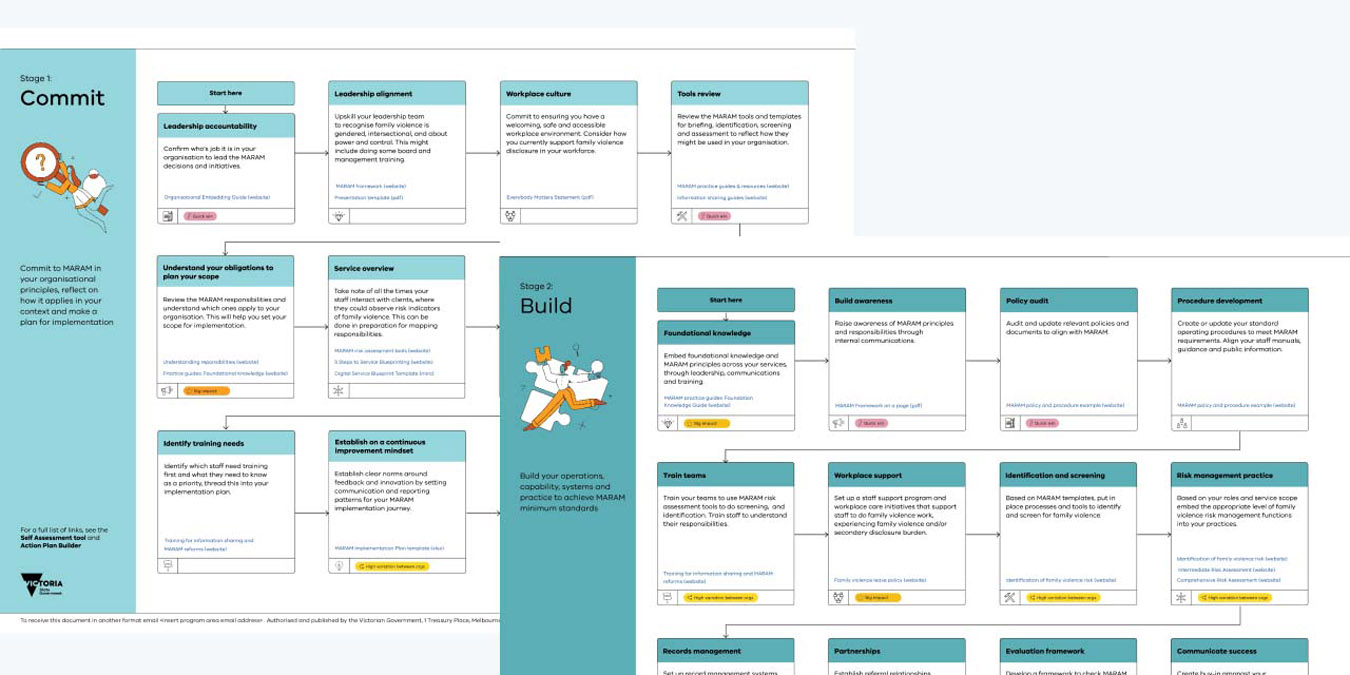We engaged a diverse group of nine participants for our co-design process. These people represented more than 20 different Victorian service types at different levels of responsibility. We had CEOs, managers, compliance people, policy people and front-facing practitioners working with families affected by family violence. Overall, there were 32 user engagements (interviews, workshops and feedback rounds).
In the end, we delivered a MARAM Maturity Toolkit. The toolkit included three different products: The Maturity Model, the six-poster Roadmap and the interactive Self-Assessment spreadsheet.
The Maturity Model was a simple plan-on-a-page. It was a top-level summary of the MARAM maturity levels and their characteristics – presented in simple language.
The Roadmap was a series of six posters outlining the journey to improving MARAM alignment. These included more detail on implementation steps.
The Self-Assessment spreadsheet was the tool with the most detail. It enabled users to self-assess their organisations across multiple internal functions and operations. It generated a bespoke action plan for the user’s organisation based on the input information.








